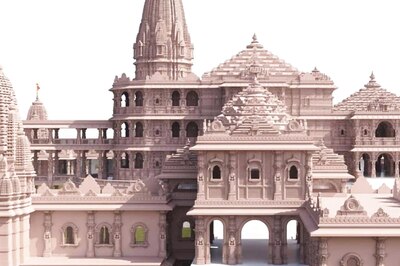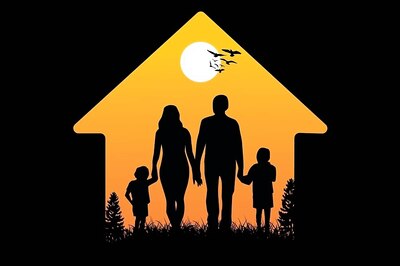
views
Online voting - the mere mention of this term in context with elections almost unfailingly leads to fears of hacking. And the fact remains, as any good security expert will tell you, everything that connects to the internet is hackable.
What differs is the degree of difficulty. The idea of good security is to make unauthorised access and manipulation more and more difficult. As we have seen time and again, controversy and conspiracies theories are abound even when elections are held through paper ballots or through EVMs.
Despite the significant hurdles before online voting can be introduced, the ongoing Covid-19 crisis has brought the idea into the mainstream with Additional Solicitor General Satya Pal Jain as well as Bihar deputy CM Sushil Kumar Modi suggesting it be considered this year.
Since the pandemic has paused election activity across India, and social distancing and other related realities become a part of our everyday lives, this may be as a good time as any to move to online voting.
In the United State which has its presidential elections coming up in November 2020, similar questions are being asked.
Supporters of the move say India has a long track record of being early to adopt democratic innovations from universal suffrage to Electronic Voting Machine (EMs), and should also lead in this.
Congress leader Shashi Tharoor agrees, though reiterating that this was his personal opinion and not the party stand.
“Personally, I believe it needs to be explored and it needs to be demonstrated that the technology is hack-proof. Registering a mobile number for each Voter ID and giving that person an encrypted code to cast their vote ought to be doable," Tharoor told News18.
Building Blocks in Place
Remote voting in the form of postal ballots is already a part of the existing electoral system but is open to only some eligible citizens - such as those in the armed force, police, senior citizens etc.
The Election Commission of India has already initiated Electronically Transmitted Postal Ballot System (ETPBS). This is a one-way electronic transmission of the postal ballots to service voters. The Service Voter then casts their vote and sends it to the respective returning officer via post.
ECI says the "complete process is secured by way of multiple checks and transmission protocol to ensure safe transmission. Upon receipt of the postal ballot at the counting centre, the returning officer validates the receipt by a QR code with that of the transmitted system."
This means that one part of the system is in place and functional. We should now look at ways to expand the idea to build a process which may or may not be similar to ETPBS to more citizens and make the electronic transmission two-way for better efficiency.
The poll panel is also working on blockchain solutions to enable remote voting. At a recent event, Chief Election Commissioner Sunil Arora said that ECI was working with the Indian Institute of Technology, Chennai, to develop a blockchain system that would allow voters to exercise their votes when they are physically away from their constituency.
However, that system isn't yet truly remote voting as it would require the voter to come to a designated venue during a pre-decided period.
Senior Deputy Election Commissioner Sandeep Saxena explains the concept as a "two-way electronic voting system, in a controlled environment, on white-listed IP device on dedicated internet line, enabled with biometric deice and a web camera".
He said an "anytime-anywhere-any device" voting would still require more time and technological development.
Caution vs Innovation
When asked what are the hurdles delaying the shift, since online systems already transmit our purchases, our health and financial records, our money, Tharoor said the biggest reason was mistrust.
"The mistrust will always be whether the government of the day will be able to interfere or manipulate the votes in some way," said Tharoor, while suggesting that "we could probably experiment in one by-election or in a small state and see how it goes."
SY Quraishi, the former Chief Election Commissioner of India, however, sounded a note of caution. “Looking at the persistent controversies about even simple, standalone, time-tested EVMs, I do not see the possibility of digital voting happening in the foreseeable future."
On the other hand, there are some positives that are clear to see. For instance, the turnout of service voters in the 2014 Lok Sabha elections was abysmally low. After the introduction of the ETPBS system, the 2019 Lok Sabha elections witnessed a turnout of 62 per cent among service voters.
Now imagine if we were to enable all citizens with the option of voting through a device in their hands and from a place of their choice. Voter participation would likely increase manifold.
Mitigating Risks
But online voting must overcome several significant hurdles before it can be rolled out widely. These hurdles include voter ID fraud, a learning curve for users to understand the user interface, and attempts by hackers to take down the back-end networks and tamper with mobile apps and data.
In elections, citizens have the right to a secret ballot, and therefore, our polling booths are designed to prevent anyone else from knowing for whom the voter cast his ballot.
The same rule would also have to apply for mobile voting. Technology will need to ensure that this secrecy is maintained both at the time of polling and also when votes are counted. While it needs to be ascertained if a voter voted or not, the same vote cannot be traced back to an individual voter. Indelible ink? Yes, that can also be digitised.
Also, unlike the current closed systems used for Indian elections, the source code should be put out in the public domain for experts to take a deep look into it and this would also enable quick identification and fixing of any potential security issues and bugs.
Such mobile voting could also help in encouraging direct participation of citizens in many of the democratic decision-making processes - which currently is unthinkable in a country the size of India. This will only go on to further strengthen India's democracy.
Election expenditure would also go down over time. The conduct of 2019 Lok Sabha elections cost the government Rs 6500 crore - an expense of Rs 72 per voter. Mobile voting can cut this down multi-fold.
From panchayat and municipal elections right up to the Lok Sabha (and numerous bypolls in between), in India, there is some election happening somewhere every other week. The current lockdown and the Emergency have been the only exceptions.
In every crisis, there is an opportunity. The current COVID-19 crisis has taught us many valuable lessons, including the relation that many jobs can be very efficiently performed from within the confine of one's home. Democracy similarly doesn't necessarily need to play out on the streets with people crowding in rallies and queuing up to vote.

















Comments
0 comment